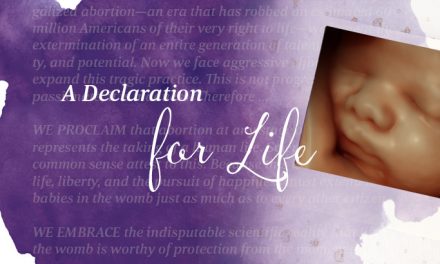Twelve state attorneys general, led by Ohio Attorney General (AG) Dave Yost, have filed suit against the U.S. Department of Health and Human Services (HHS). The AGs are challenging the agency’s recent reversal of its 2019 “Protect Life Rule,” the net effect of which would be to allow taxpayer funds to pay for abortions, contrary to the federal law known as Title X.
Under Title X, approximately $250 million per year is handed out to clinics that provide “family planning services” such as birth control and basic health care to low-income women. However, Section 1008 of Title X specifically requires that “none of the funds appropriated under this title shall be used in programs where abortion is a method of family planning.”
The HHS’ 2019 Protect Life Rule finalized requirements that ensured clear physical and financial separation between a Title X program and any activities that fall outside the program’s scope. That physical and financial separation was intended to ensure compliance with the law’s requirement that Title X funding not support programs where abortion is a method of family planning.
The 2019 rule also prevented family planning providers from referring patients for abortions.
Abortion sellers such as Planned Parenthood are known to house their abortion activities as well as family planning services under one roof. Without the requirement for strict separation of facilities and finances, Title X taxpayer funds inevitably end up intermingled with funds the abortion sellers use to conduct their abortion activities. And it’s easy for them in that situation to refer women down the hall to get an abortion.
Ending up with more abortions, subsidized by the American taxpayer, is not what Congress envisioned in 1970 when it passed Title X.
So, AG Yost and his 11 fellow state AGs have asked a federal court in Ohio to issue an injunction blocking HHS’ recent action, and to order the reinstatement of the 2019 rule.
Yost’s office issued a press release announcing the filing of the lawsuit.
“You can’t ‘follow the money’ when all the money is dumped into one pot and mixed together,” said Yost, also a former Ohio Auditor, in describing the intermingling of funds that inevitably follows from not having a “separation” rule. “Federal law prohibits taxpayer funding of abortion — and that law means nothing if the federal money isn’t kept separate. That, frankly, is the real reason behind the rule.”
The latest HHS rule, according to the 12 states bringing the lawsuit, allows abortion and family planning facilities to share staff, waiting rooms and treatment rooms. Because money is fungible, the states argue in their motion for an injunction, the new HHS rule “means that Title X funds will be used to subsidize abortions.”
“Money’s fungibility,” the states continue, “means that every dollar an abortion provider receives through Title X frees up another dollar that the grantee can use to subsidize abortion. The money saved on items that Title X pays for, for example, might be used to pay the clinic’s rent, to hire additional staff, to advertise abortion services, and so on.”
When the Protect Life Rule went into effect in 2019, Planned Parenthood chose to withdraw from the program rather than abide by the physical and financial separation requirements, giving up the approximately $60 million it annually received from the program.
Another effect of HHS’ new rule is that Title X grantees must provide referrals for abortion “upon request,” which, according to the 12 state AGs, puts the rule squarely in violation of Title X’s requirement that program funds not be used for “a program where abortion is a method of family planning.” The 2019 rule, in contrast, strictly prohibited Title X grantees from referring patients for abortions.
The AGs have requested the court issue a preliminary injunction preventing HHS officials from implementing or enforcing the new rule while the lawsuit proceeds.
States joining Ohio in the legal action include Alabama, Arizona, Arkansas, Florida, Kansas, Kentucky, Missouri, Nebraska, Oklahoma, South Carolina and West Virginia.
The case is Ohio v. Becerra.
Photo from Shutterstock.






